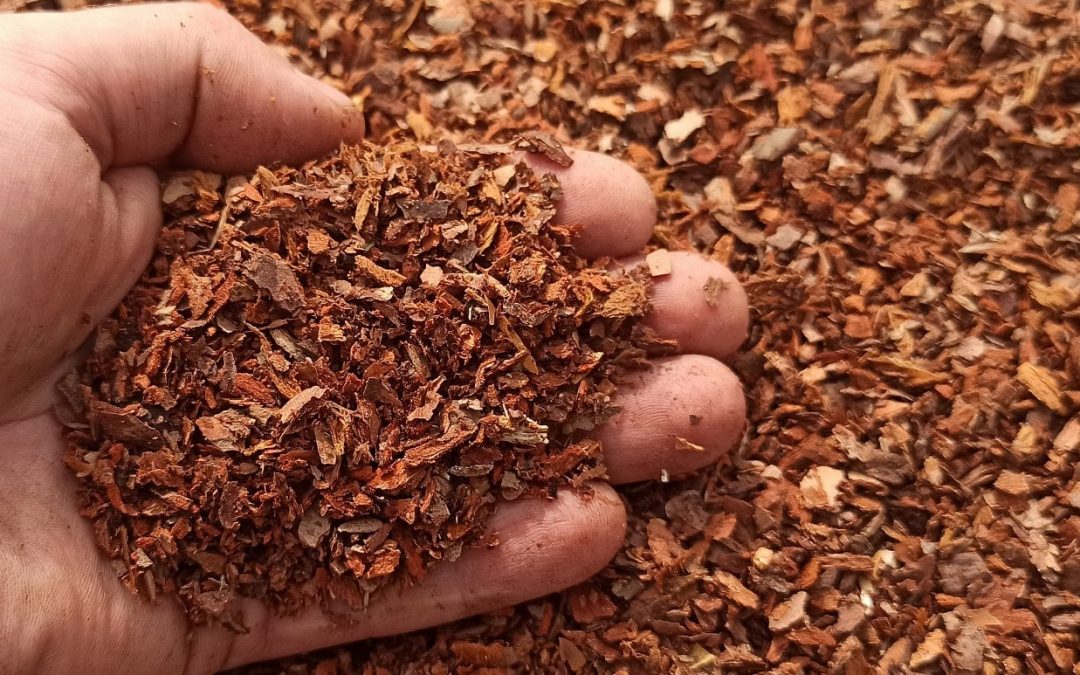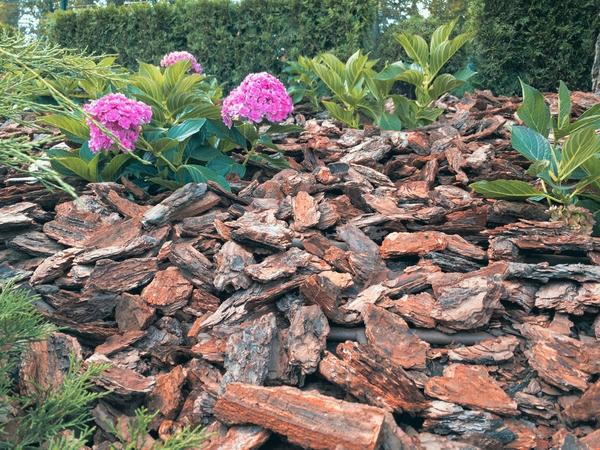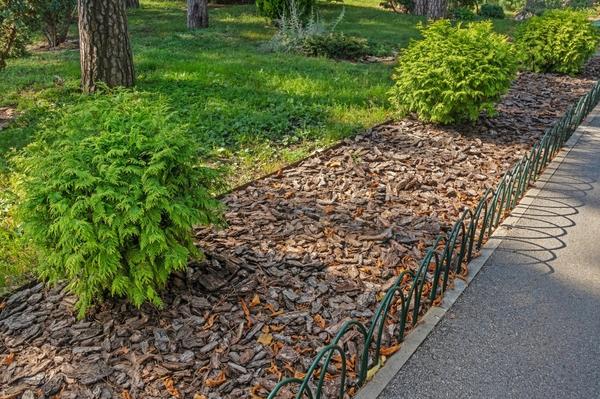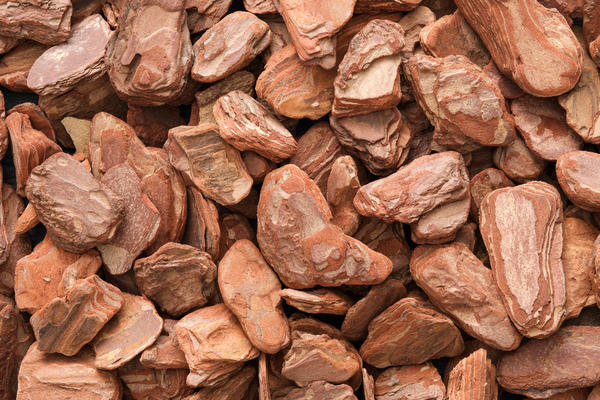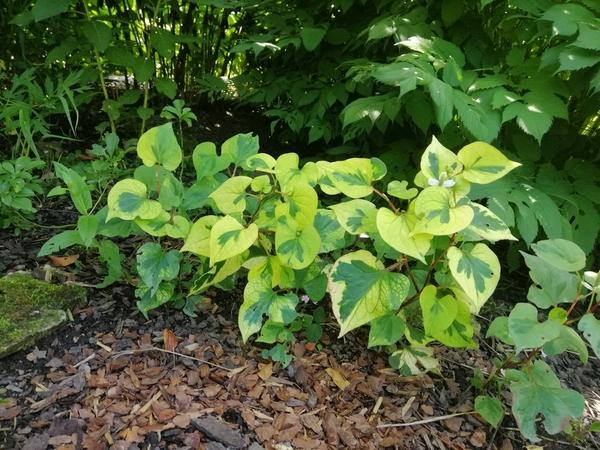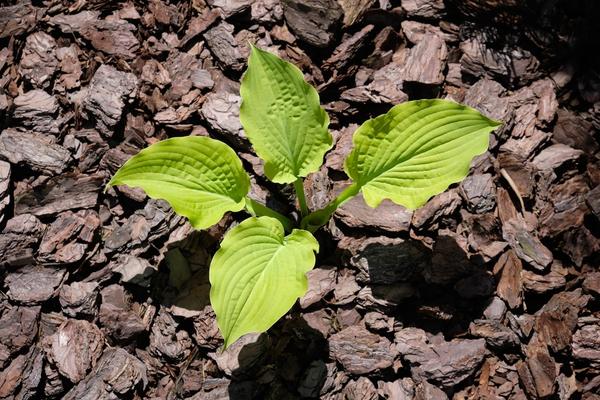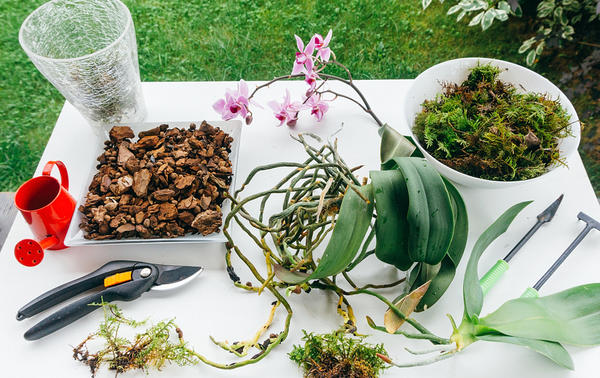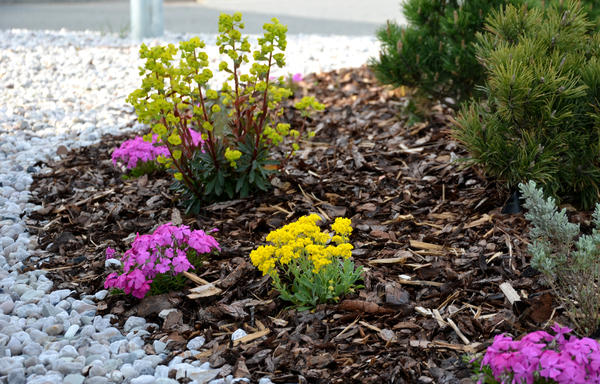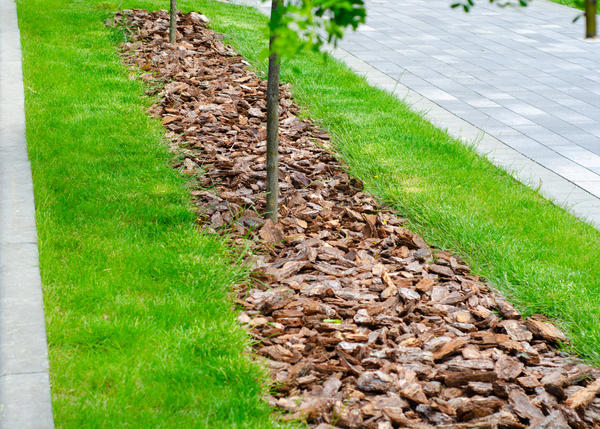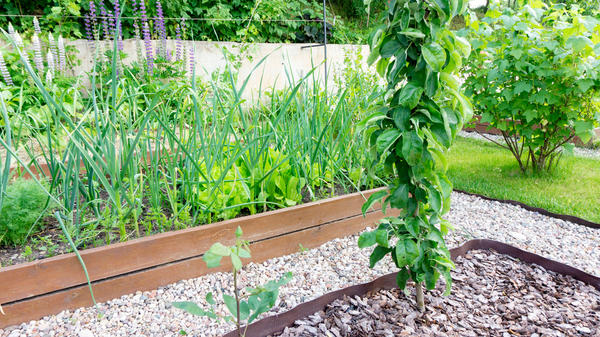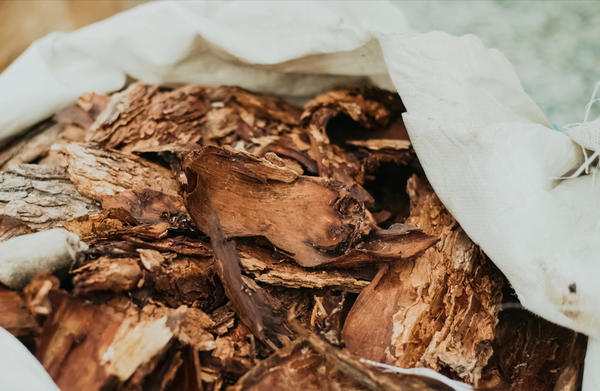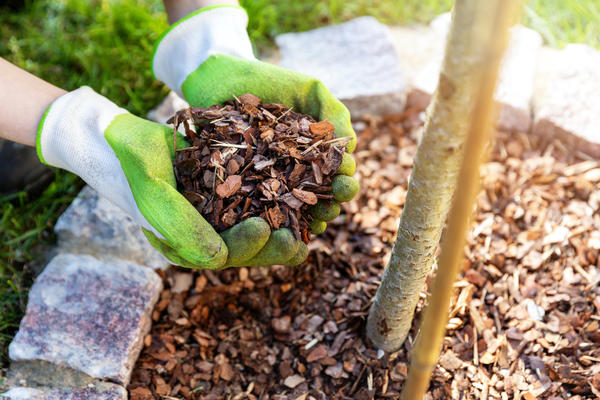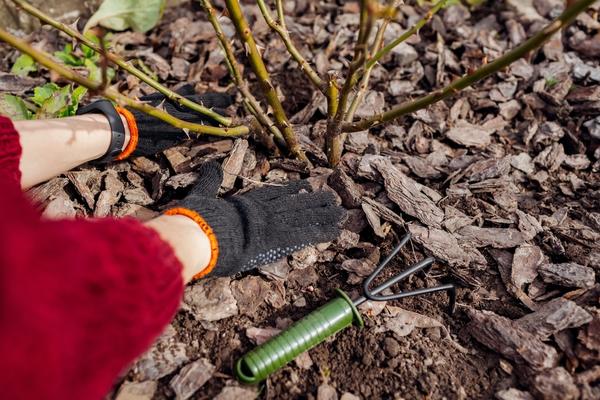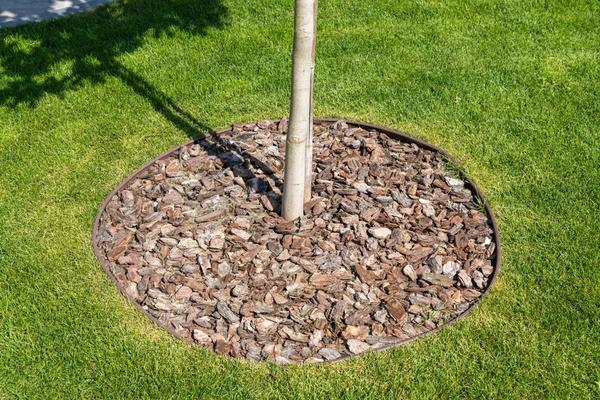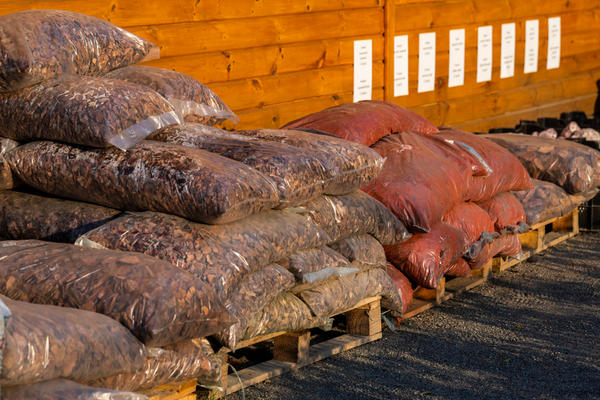A person who is far from gardening usually knows about pine bark that, firstly, it is beautiful and smells pleasant, and secondly, it is convenient to light a fire with its help. Owners of personal plots see great benefits in this natural material.
Pine bark is often used as mulch in different parts of the garden, as well as for other purposes, so pine bark mulch is worth talking in more detail about what it is, and its properties, and also answering popular questions from our readers.
If you are not yet fully convinced that mulch is needed both in the garden and in the vegetable garden, we suggest you read several gardening experts’ findings about it. After this, you will probably join the army of mulching supporters.
Table of Contents
- 1 Types and fractions of pine bark
- 2 What are the benefits of pine bark mulch?
- 3 How does pine bark mulch affect soil properties?
- 4 Uses of pine bark
- 5 Harvesting pine bark
- 6 Questions about pine bark mulch
- 6.1 What plants are not suitable for pine bark mulch?
- 6.2 How often should pine bark mulch be replaced?
- 6.3 What to do with pine bark mulch in the garden in the fall?
- 6.4 How to feed plants if the flower garden is mulched with pine bark?
- 6.5 Is it necessary to treat pine bark against diseases and pests before use?
- 6.6 There is mold in the bark bag. Is it possible to use this pine bark mulch?
Types and fractions of pine bark
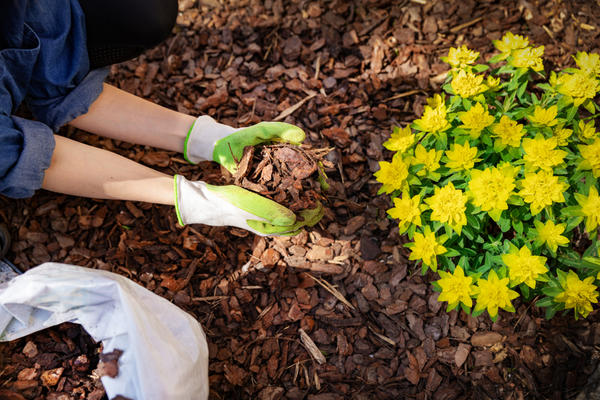
Pine bark on an industrial scale is a waste product from wood processing enterprises, an environmentally friendly material, the cost of which directly depends on the size of individual particles.
Most often in gardening stores, you can find bark of small, medium, and large fractions, which is harvested by machine, as well as luxury bark, removed by hand. However, there are other varieties.
The bark is a natural and environmentally friendly material
Agrotechnical
This is the smallest fraction – with a particle size of up to 1 cm. It is used to enrich the soil with useful substances or as bedding under larger fractions when mulching.
Small
This includes bark with a particle size of 1 to 3 cm. This fraction is the most popular, as it is well-suited for mulching flower beds, lawns, and ornamental trees in small garden plots, while its cost is relatively low.
fine bark
Average
The particles of this fraction have a size of 3-6 cm. It is used for mulching relatively large areas.
Large
This category includes two fractions – with particle sizes of 6-10 cm and 10-20 cm. They are used for mulching large plants and decorating garden paths. The largest fraction is used when decorating coastal zones of reservoirs and filling slopes.
pine bark mulch in the park
Non-factional
This is unsifted bark containing elements of different sizes. It is practical from the point of view that small particles fill the space between large ones well, creating a dense and beautiful mulch layer.
Galvanized pine bark mulch
The name means that the bark has been further processed so that the particles have rounded edges and a smooth surface. In addition, the process removes most of the impurities.
Galvanized bark is also divided into fractions – 1-3 cm, 3-6 cm, 6-10 cm, and 10-20 cm. It is used for mulching, as well as when decorating a house, to create decorative panels, and wall or ceiling cladding.
Galvanized pine bark
What are the benefits of pine bark mulch?
Mulch made from any tree bark is an environmentally friendly and durable material that does not require frequent replacement. It copes well with the main tasks – retains moisture and prevents weed germination.
In addition, the pine bark mulch layer protects the root system of plants from overheating in the summer and insulates it in the winter.
This is a loose material that allows water to pass through the well (there is no need to move the mulch apart when watering). It preserves the porous structure of the soil, prevents it from caking, and thus supports the breathing of the roots.
Bark filling fits into almost any composition. Pine bark mulch is a natural antiseptic. It contains essential oils and phytoncides, which inhibit the development of pathogenic microflora and generally have a beneficial effect on plants.
The structure of pine bark is such that mulch made from it, as a rule, does not fly apart when there are gusts of wind. It fits well into the landscape and will come in handy in almost any composition, as it has a discreet gray-brown color.
How does pine bark mulch affect soil properties?
pine bark mulch does not affect the acidity of the soil.
There is an opinion among amateur gardeners that mulching with pine bark mulch greatly acidifies the soil. However, the point of view of experts on this issue is clear – pine bark mulch does not have a significant effect (more than the permissible measurement error) on soil acidity.
If the plants grew well in your area without deoxidation, then you don’t need to do this when mulching with bark. Of course, if we are talking specifically about composing soil substrates is another story. The crushed bark of this crop has a pronounced acidic reaction. For comparison, the pH of some tree bark is:
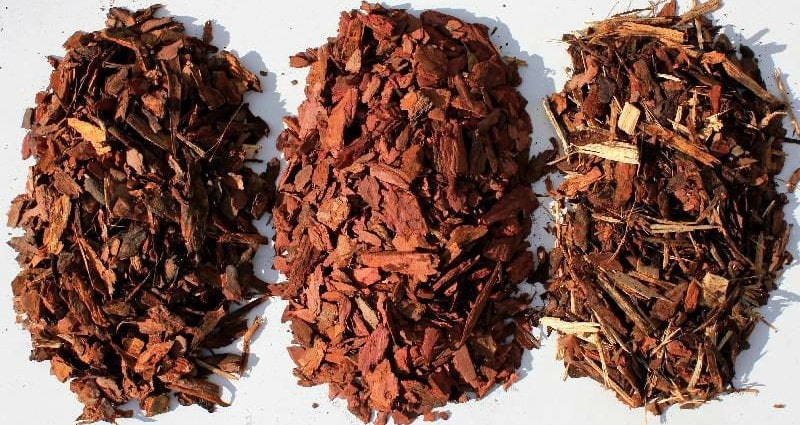
- pine bark – 3.65-3.73;
- oak and linden bark – 4.78-5.05;
- aspen bark – 5.1-6.18;
- birch bark – 4.28-4.88.
Crushed pine bark is used when growing acidophilus plants both in the garden and in indoor plant growing, mixing it with other components. For example, using the pine bark mulch, substrates are made for plants of the families Orchidaceae, Bromeliads, some Araceae (Anthurium, Philodendron ), and the so-called forest cacti ( Schlumbergera, Epiphyllum, Rhipsalis, Hylocereus). In the garden, it can be used for growing hydrangeas, heathers, rhododendrons and azaleas, blueberries and lingonberries, etc.
pine bark mulch is used in growing some indoor plants, including phalaenopsis
Uses of pine bark
Although pine bark mulch is considered a relatively inexpensive material, in gardening it is still more often used for filling ornamental plants. When choosing a fraction, you should focus on the visual effect: if the flower garden is small, then it is better to use small and medium. It can also be used to fill wide areas between ornamental plants so that they stand out better.
In small flower beds, it is better to use small and medium fractions of pine bark. Pine bark of a large fraction looks good when mulching large spaces – slopes, large mix borders with trees and shrubs, and when planting trees in alleys.
Moreover, it is not necessary to use only it – you can fill the main area with the medium fraction (or small and medium), and distribute the large one on top. A beautiful and economical option!
Filling with bark under trees You can also use a large fraction to fill the tree trunks. Large pieces of bark are suitable for filling tree trunks. If you have the opportunity to stock up on a large amount of bark, you can use it to mulch berry gardens and other plantings.
Pine bark is suitable for mulching in both the vegetable garden and orchard. Pine bark is suitable for constructing paths, both as the main material and in combination with others.
The bark is used in the construction of paths. As mentioned above, pine bark mulch is used in the preparation of substrates for some garden and indoor plants, and it can also be used to make acidic compost.
Harvesting pine bark
If you have a pine forest nearby, you can harvest the bark yourself. This is not a quick and easy task: even though the material will lie under your feet, as a rule, it is not good enough for mulching.
You have to wander through the forest in search of suitable trees. Here are some rules for collecting bark:
- You cannot remove bark from living trees! This will cause irreparable damage to the tree. The maximum that is possible is to take the top layer of bark of old pine trees, which itself is easily separated;
- The bark of old, rotten trees is not suitable;
- The best option is the bark of trees cut down no more than 6 months ago.
If you have a pine forest nearby, you can harvest the bark yourself. During the collection process, you can simultaneously sort the bark, placing it in different bags.
Afterwards, the material must be dried (it will take up to 10 days), and then, if desired, crushed using pruning shears or a garden shredder. It is better to store valuable material in breathable fabric bags.
Questions about pine bark mulch
We have prepared answers to several frequently asked questions about using pine bark in the garden.
What plants are not suitable for pine bark mulch?
You should not mulch in general (and with pine bark mulch in particular) ground cover crops. More precisely, this can be done immediately after planting, but when it grows, the fill needs to be raked out.
Plants whose rhizomes are located superficially (for example, like irises ), as well as those whose renewal buds lie close to the soil surface ( liverworts ) should be carefully, lightly, and thinly mulched.
How often should pine bark mulch be replaced?
As a rule, it is not necessary to completely change the pine bark mulch – you can simply add it periodically.
The speed of destruction depends on many reasons, including the faction. On average, the time for partial replacement is 2-3 years, a maximum of 4 years.
Pine bark mulch does not need to be completely changed.
What to do with pine bark mulch in the garden in the fall?
If we are talking about mulch or backfill, then in the fall you don’t need to do anything with it. If you have a supply of bark, you can increase its layer in the trunk circle of those plants whose roots you want to insulate a little.
How to feed plants if the flower garden is mulched with pine bark?
In this case, you can use fertilizers in the form of solutions, especially if you have laid geotextiles under the bark.
Another option (if the mulch is on the soil) is to rake the bark from the plants and shallowly embed granular mineral fertilizers or compost. Some gardeners apply fertilizer using pipes buried in the ground.
To feed the plants, the bark can be raked off and then returned to its place.
Is it necessary to treat pine bark against diseases and pests before use?
If you are worried that stem pests, in particular bark beetles, will “move” into your area along with the bark, do not worry. The living conditions of such parasites are very strictly defined, therefore, after the bark has separated from the tree, they will not be able to exist.
In any case, if you want to guarantee the safety of the garden, you can spray the bark layer by layer with an insecticide, and after laying, spill it with a fungicide solution (for example, Fitosporin-M).
In cases where the bark is intended for orchids or other indoor plants, you can boil it and dry it or heat it in the oven (be careful, it can ignite at high temperatures).
There is mold in the bark bag. Is it possible to use this pine bark mulch?
According to reviews from gardeners who have encountered a similar problem, such pine bark mulch is not dangerous.
Some people simply lay it out under the plants as is, and soon the mold will disappear on its own; others, just in case, spill the mulch with a fungicide solution. If we are talking about using it for indoor plants, the bark can be boiled or heated in the oven.
If mold has formed on the bark, you can still use it. Using pine bark, you can solve a lot of gardening issues, and most importantly, make the garden more beautiful.
Flower beds and tapeworm plants mulched with this natural material look neat and advantageous; the plants receive an ideal background against which they look most impressive.

